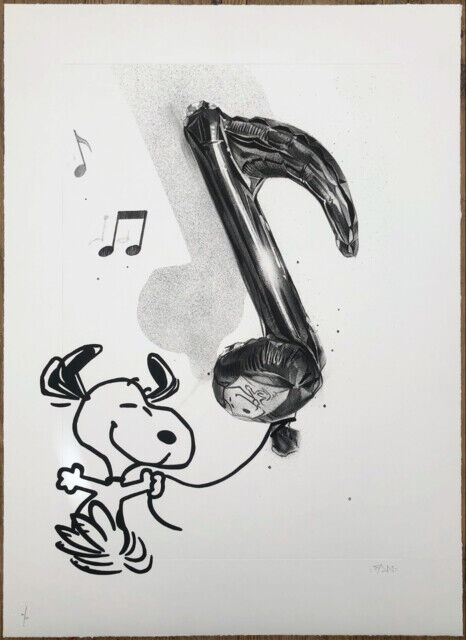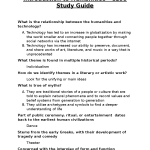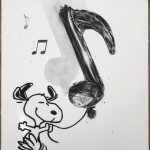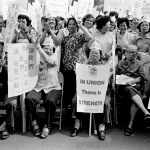Dance like somebody’s watching is an empowering mantra that encourages individuals to express themselves freely and confidently through movement. In a world where we often feel pressured to conform, embracing our unique dance styles can be a liberating experience. With the right dance tips, anyone can learn to let go of their inhibitions and cultivate dance confidence, regardless of skill level. This transformative journey not only releases stress but also opens the door to spiritual dance, connecting us with deeper aspects of ourselves. So, are you ready to ditch the self-consciousness and fully embrace the vibrant rhythm of life?
When we talk about embracing the joy of movement, the phrase “dance like somebody’s watching” resonates deeply with our innate desire for expression. This concept of dancing freely can be viewed as participating in a spirited event, where confidence dictates your every move, much like how Jeffrey Page encourages his students to unleash their true selves. It’s about finding that perfect balance of energy and personal expression, creating a physical representation of our innermost thoughts and feelings. As we explore the art of moving without inhibition, we discover how the act of dancing can serve as a powerful mechanism for emotional and spiritual release. Ultimately, learning to celebrate our bodies through dance is not just an individual act but a universal connection that reminds us all of the beauty found in authenticity.
Dance Like Somebody’s Watching: Embrace Your True Self
When we dance like somebody’s watching, it triggers a special kind of energy within us. Jeffrey L. Page notes that the act of dancing isn’t just about movement; it’s about being seen and expressing oneself fully. The fear of judgement often holds individuals back, but true freedom in dance occurs when we shed those concerns. By embracing the idea that we are indeed performing for an audience, we can tap into deeper layers of our creativity and authenticity. It’s all about releasing the inhibitions that keep our bodies rigid and our souls silent.
Moreover, this mindset encourages a release through dance that aligns with both spiritual and personal expression. Just as dancers in Ghana access a trance-like state through ritual dance, when we act as if we are on stage, we engage in a deep dialogue with our inner selves. It’s less about how we look and more about the feelings we generate. Rejecting the pressure to perform perfectly allows us to connect with our true essence. Dance like somebody’s watching isn’t just performance; it’s a celebration of our individuality and a way to reclaim our stories through movement.
Unlock Your Dance Confidence: Tips for Everyone
Building dance confidence often starts with understanding the nature of self-expression. Pedagogical approaches often emphasize that anyone can dance; it’s simply about connecting with the rhythm of one’s body. Engaging in practice routines helps establish muscle memory, but more importantly, embracing dance tips that focus on self-acceptance is crucial. Remember, the goal isn’t perfection; it’s about enjoying the movement and delivering your unique story through dance. The more you practice, the more confident you become, creating a powerful feedback loop of improvement and enjoyment.
Additionally, channeling dance confidence is about letting go of self-criticism. In classrooms, effective instructors like Page encourage students to release tension by vocalizing their frustration, allowing the logical mind to lose its tight grip on their performances. By shifting focus from judgment to liberation, dancers can truly embody their movements. Confidence in dance radiates from within — an acceptance of imperfections and the willingness to express genuine feelings. The insights shared by experienced dancers can provide key tips that help anyone discover their inner performer, dramatically enhancing their dance confidence.
The Spiritual Side of Dance: Connecting Mind and Body
The spiritual aspect of dance is often overlooked but serves as a vital component in many cultures. For instance, in Mali’s djine foly, dancers tap into a trance-like state that facilitates a deep emotional release. This connection to spirituality allows the body to express feelings that might be difficult to articulate in words. Engaging in such practices can unlock powerful feelings of joy and liberation. By acknowledging the spiritual side of dance, participants can experience a cathartic release, offering both physical rejuvenation and mental clarity.
Moreover, spirituality within dance encourages individuals to connect with their ancestry and cultural identity. For many Black communities, such as those who catch the holy ghost while dancing, this form of movement is a celebration of one’s heritage and history. It invites participants to express their joy through dance, emphasizing that it’s not about aesthetics but about feeling an overwhelming sense of freedom. By recognizing these spiritual dimensions, dancers enhance their practice, adding a layer of depth and meaning to their movements.
Jeffrey Page’s Dance Philosophy: Breaking Boundaries
Jeffrey Page’s insights into dance offer a refreshing perspective that recognizes the intersection between physicality and vulnerability. Acknowledging that nobody is concerned about how you look when you dance, he suggests that what truly matters is the release of your inner self. This philosophy drives dancers beyond mere technique towards heartfelt expression. Page’s teachings inspire individuals to break away from the constraints of societal expectations and instead focus on the emotional storytelling that dance can evoke.
His background in both classical and contemporary dance provides a well-rounded approach to choreographing movements that resonate on multiple levels. By engaging with various forms of dance — from the electric beats of modern performances to the fluid motion of traditional routines — he encourages dancers to explore different styles, allowing their unique voices to shine through. Page’s classes emphasize the importance of releasing emotions, which ultimately leads to an authentic dance experience that speaks true to the dancer’s character.
Dance Tips for Beginners: Making the First Move
For beginners, diving into the world of dance can feel overwhelming. However, starting with simple tips can make the experience enjoyable and rewarding. First, don’t overthink your movements. The essence of dance lies in expressing oneself naturally, which means letting your body flow to the music. Consider using popular dance classes or online tutorials that break down movements step by step. This structured approach allows newcomers to build confidence gradually while experiencing the joy of dancing.
Additionally, practicing with friends or joining a dance community can greatly enhance your experience. Group settings foster encouragement and provide a comfortable environment where everyone can learn together. Sharing dance moments with others tends to alleviate the awkwardness that beginners often feel. Ultimately, the key dance tip for beginners is to enjoy the journey rather than focus solely on the destination; every step you take contributes to your growth and your dance story.
Building Emotional Release Through Movement
The emotional release generated through dance can be profound for individuals seeking an outlet for their feelings. Dance is not merely a physical act; it is a means for expressing complex emotions. By moving our bodies, we unlock feelings that may be trapped within. Encouraging participants to release tension — much like what Page’s classes promote — allows individuals to find their own rhythm and express hidden emotions in a safe space. It transforms the dance floor into an arena for catharsis and acceptance.
Incorporating mindful movement practices into dance routines can further enhance this emotional release. Techniques such as deep breathing and meditation before dancing can help ground dancers, allowing them to connect mindfully with their bodies. The resulting synergy between body and emotional expression creates a beautifully liberated state of being. Ultimately, it’s about acknowledging and celebrating what dance can offer as a powerful medium for personal liberation and emotional exploration.
Finding Your Rhythm: Tips for Self-Discovery
Finding your rhythm is essential in the art of dance. It serves as the foundation for expressing one’s individuality and creativity. Understanding that rhythm can be felt in various forms — from beats to the natural pace of one’s own movements — offers dancers an avenue for self-discovery. Experimenting with different styles, genres, and tempos can help uncover personal preferences, showcasing the unique narrative every dancer has within. Establishing a rhythm helps dancers feel more connected to the music and empowers them to let their bodies move freely.
To nurture this sense of rhythm, practicing in familiar and comfortable settings can prove beneficial. Creating a personal space where you can dance without judgment enables deeper exploration of movement. Encouraging personal improvisation by letting your body respond to the music organically fosters an environment of creativity and intuition. Every dancer’s journey is different, and finding one’s rhythm is about experiencing the transformative power of movement; it’s an inner exploration that can lead to incredible personal growth.
Releasing Stress Through Dance: A Therapeutic Approach
Dance is not just an art form; it’s also a powerful tool for stress relief. Engaging in movement allows individuals to channel their stress into expressive physicality. The act of dancing releases endorphins, contributing to a sense of happiness and relaxation. Singers often point out that when stressed, moving to music can serve as an instant mood lifter. Techniques such as freestyle dancing, which emphasizes personal expression, are particularly effective for relieving tension and promoting mental health.
Furthermore, the therapeutic qualities of dance can also be enhanced by incorporating structures like group classes or workshops. In these settings, dancers find community and support, making it easier for them to let go of stressors. Joining others in this shared experience creates bonds that foster a safe space for emotional vulnerability and growth. Therefore, when conflict arises in everyday life, turning to dance offers both an energizing and soothing resolution.
The Cultural Significance of Dance: Understanding Heritage
Dance serves as a poignant reflection of cultural identity and heritage. Across various societies, different styles of dance emerge to tell unique stories, value traditions, and embody collective experiences. This cultural significance is beautifully illustrated in Page’s references to the spiritual practices in Mali that encapsulate historical meanings through dance. Every movement tells a story, creating a collective memory where dance becomes a bridge connecting past, present, and future generations.
Moreover, engaging with diverse dance forms allows individuals to appreciate the richness of different cultures while discovering the common threads tied to human experiences. By participating in these cultural dances, one can celebrate diversity while fostering a sense of unity and understanding among shared practices. The dance floor transforms into a space for cultural dialogue, offering insights into life experiences that shape communities. Thus, acknowledging and exploring dance’s cultural significance can enrich personal practice while fostering connections among varied cultural expressions.
Frequently Asked Questions
How can I dance like somebody’s watching without feeling self-conscious?
To dance like somebody’s watching with confidence, focus on expressing yourself freely. Remember, dancing is about joy, not perfection. Embrace dance tips that prioritize spontaneity over technical accuracy, and let your body move naturally. Practicing mindfulness while you dance can also help in reducing self-consciousness and enhancing your freedom of movement.
What are some effective dance tips for building confidence in my dancing?
Effective dance tips for building confidence include setting small, achievable goals, practicing regularly, and exploring different styles of dance. Consider taking classes focused on dance confidence, where instructors encourage you to let go of judgement and simply enjoy movement. Engaging in spiritual dance can also help you connect with your inner self, boosting your natural confidence.
What does dancing like somebody’s watching mean in a spiritual context?
Dancing like somebody’s watching can have deep spiritual connotations, as it suggests embracing vulnerability and authenticity in your movements. Spiritual dance, such as the djine foly practice from Mali, encourages dancers to transcend their physical limitations and connect with a higher spirit or essence. This allows for cathartic release and a deep personal expression that feels liberating.
How does the concept of ‘dance like somebody’s watching’ relate to Jeffrey Page’s teaching methods?
Jeffrey Page’s teaching methods emphasize the importance of personal expression in dance, encouraging students to release their inhibitions and dance boldly. His approach, which often involves loud vocal encouragement, helps students overcome their fears of judgement, allowing them to perform as if somebody is watching, which is ultimately liberating.
What are some common obstacles to dancing like somebody’s watching?
Common obstacles include fear of judgement, self-doubt, and overthinking movements. To overcome these barriers, incorporate dance tips that promote relaxation, such as deep breathing or engaging in playful improvisation. Engaging in practices like spiritual dance can help shift your focus from looking good to embodying the joy of movement.
How can I find joy in dance like somebody’s watching?
Finding joy in dance like somebody’s watching starts with letting go of the need for perfection. Focus on the music, embrace your unique style, and express emotions without restriction. Dance with intention and allow yourself to fully experience the moment, remembering that true joy comes from the act of dancing itself rather than external validation.
What role does release through dance play in confidence?
Release through dance plays a crucial role in building confidence as it allows individuals to let go of inhibitions, stress, and self-criticism. By engaging in open, expressive movements, dancers experience emotional catharsis, which fosters greater self-acceptance and confidence. This transformative process enables dancers to portray authenticity, enriching their performance as if they are continuously being observed.
| Category | Key Points |
|---|---|
| Overview | The article discusses how to dance confidently and expressively, even when aware of being watched. |
| Instructor | Jeffrey L. Page is a theater and opera director with a background in classical and contemporary works. |
| Philosophy of Dance | Dance should be about expression and catharsis rather than concern for appearance. |
| Cultural Context | The concept of ‘djine foly’ illustrates how dance can be a spiritual and communal experience. |
| Practical Advice | Participants are encouraged to release their inhibitions and dance without self-judgment. |
Summary
To dance like somebody’s watching is to embrace the art of self-expression without fear. The insights of Jeffrey L. Page remind us that dance transcends aesthetic concerns; it emerges as a powerful tool for communication and emotional release. By allowing ourselves to experience dance fully, we access a deeper connection to our inner selves and the world around us, turning every performance into a personal narrative that is both liberating and transformative.










